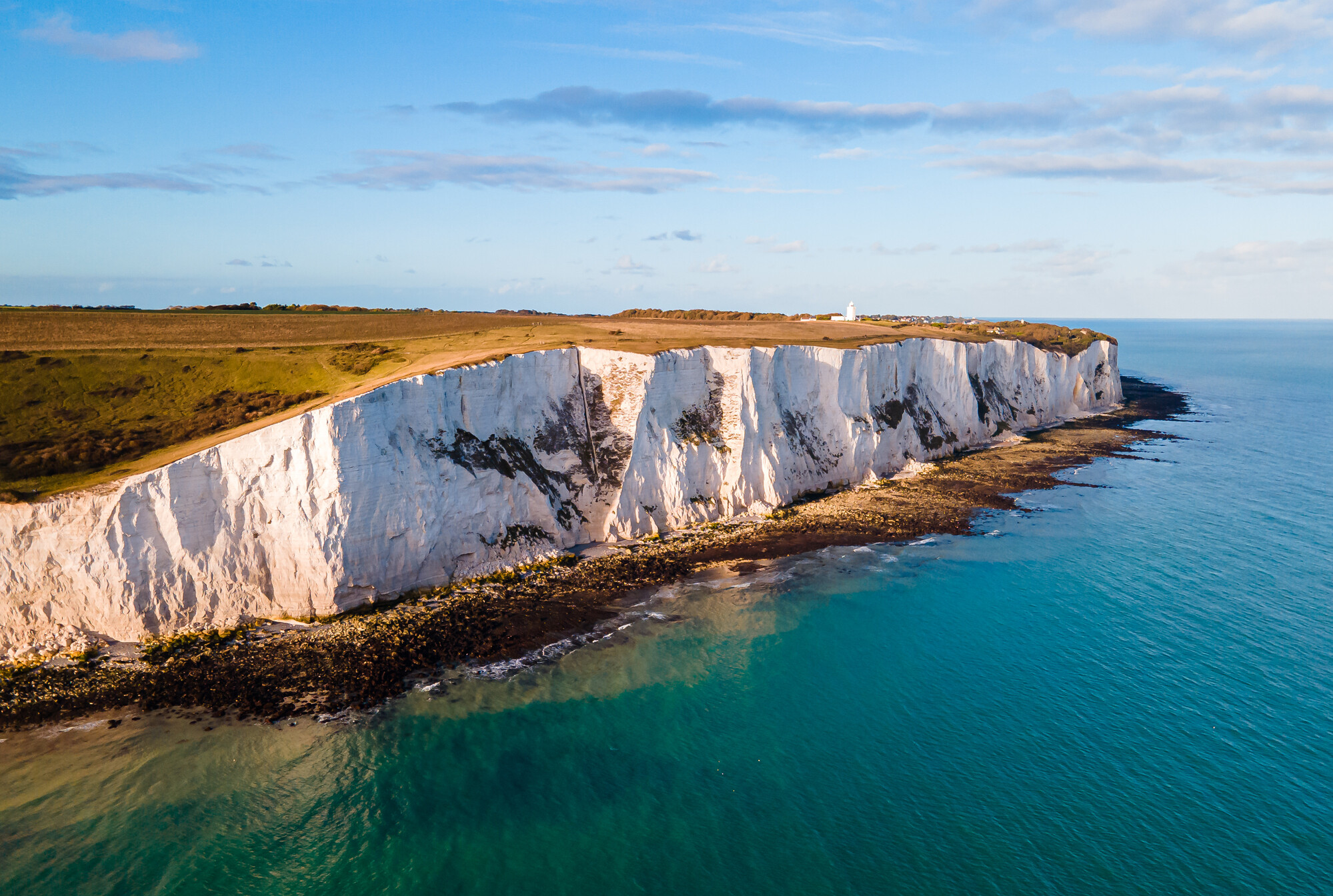There are many places by which the character of a country can be judged. For the UK, the White Cliffs of Dover – not only a geographical boundary, but also a powerful historical and cultural symbol – are rightly considered such a place. These chalk cliffs have become an integral part of the national identity, a landscape pride and one of the most impressive destinations for travelers seeking a touch of authentic England.
Geography and origin: where and how the White Cliffs originated
The White Cliffs of Dover are located in the county of Kent, facing the English Channel – just 32 kilometers from the French coastline. The most famous section stretches for 13 km east and west of the port of Dover. These cliffs are part of the North Downs chain within the Area of Outstanding Natural Beauty.
Scientifically, the rocks are an outcrop of chalk, a soft sedimentary rock formed over 70 million years ago from the remains of microscopic marine organisms. The black streaks of flint piercing the snow-white surface are a trace of marine life from the Cretaceous period. This geological composition is unique not only for its beauty but also for its scientific value: the layers of chalk and flint on the British and French shores coincide, confirming their once common origin.
Erosion and ecology: fragile resilience
The White Cliffs are subject to natural erosion accelerated by storms and human intervention. Whereas erosion used to occur at a rate of 2-6 cm per year, erosion is now reaching 22-32 cm annually, according to research by the University of Brighton. Despite this, scientists predict that the rocks will persist for thousands of years.
The ecosystem of chalk grassland above the cliffs is home to rare plant species and butterflies such as Adonis blue and silver-spotted skipper. This is where the Exmoor pony grazing program has succeeded in containing invasive species and preserving biodiversity. The unique flora and fauna make this area an important nature reserve, protected as a special conservation area.
Historical significance: from Caesar to Vera Lynn
The Rocks are mentioned as far back as Julius Caesar’s records as the first land Britain saw. In the Middle Ages, forts were located here, and Dover Castle, nicknamed “the key to England,” served as a crucial defensive point.
During World War II, the cliffs became a symbol of hope: their sight greeted soldiers evacuated from Dunkirk. It was then that the song “The White Cliffs of Dover” sung by Vera Lynn gained nationwide popularity, becoming an anthem of anticipation and faith in homecoming.
What a tourist should know: practical tip
The best time to visit is from May to September, when the weather is conducive to hiking and the chalk meadows are covered in flowers.
How to get there: from London to Dover is about 1 hour 15 minutes by train. From Dover harbor, it is easy to climb the cliffs on foot or take a bus service.
What to look out for:
- South Foreland Lighthouse is a Victorian lighthouse that offers stunning views of the strait.
- Fan Bay Deep Shelter is a network of WWII-era tunnels hidden in the thickness of the rock face.
- Samphire Howe is a nature park created on soil from a tunnel under the English Channel, with equipped trails and picnic areas.
Useful tip: shoes should be comfortable for rough terrain – the trails are sometimes steep and the wind from the sea can be quite strong even in summer.
Debunking the myths: bluebirds and suicide
Many people believe that the White Cliffs song sings about bluebirds, which simply do not exist in the British Isles. It’s actually about swallows or swifts returning in the spring. Another myth is that cliffs are supposedly a favorite place for suicides. Although the height of the cliffs is impressive, there is no statistically significant number of such occurrences recorded here – rather a literary image enshrined in Shakespeare’s King Lear.
Why it’s worth seeing for yourself
The White Cliffs of Dover are more than a natural site. It is a place where history becomes visible, where nature and man create a harmonious, albeit fragile, balance. Majestic vistas, historic artifacts and atmospheric trails make this destination a must for anyone who wants to know the real England – not a tourist postcard, but a living, breathing landscape.
And if you’re looking for a place where you can feel the power of time, touch heritage and simply breathe in the sea air with a view of France – the White Cliffs of Dover await you.







